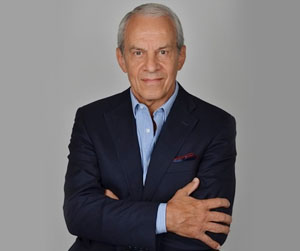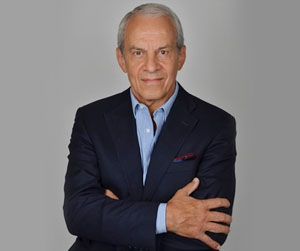Gynecomastia
Gynecomastia is an abnormality of breast volume development in men.
It occurs in adolescence either unilaterally or bilaterally, and can regress spontaneously at the end of puberty. If it persists, it may pose a problem that requires surgical correction.
A complete check-up must be carried out to look for the possible causes of the gynecomastia (hormonal disorders, tumour, etc.). The assessment includes an ultrasound and mammogram to detect any tumour and identify the gynecomastia’s main component, which may consist of glandular tissue or fatty tissue (adipomastia) and usually a mixture of both (gyneco-adipomastia).
Glandular gynecomastia most often affects young adults and adipomastia more often affects older men, sometimes if individuals are generally overweight or after massive weight loss. In this case, adipomastia is associated with significant breast sagging that will need to be treated at the same time as a volume reduction.
If a cause has been identified, treating this generally gets rid of the gynecomastia more or less completely. In most cases, however, a cause cannot be found and gynecomastia persists or may even get worse. If it is troublesome, surgical treatment is required.
The discomfort caused is often most significant in young people who may be the object of mockery. In addition to aesthetic discomfort, it can lead to a complex and a lack of self-confidence, which can affect well-being and social integration, preventing sports activities and problems with clothing.
The new harmonious pectoral curve will help with balance and self-confidence, whether the body is naked or clothed.
Uses
Different techniques can be used, depending on the main gynecomastia element:
-
Fatty tissue (adipomastia) can be removed simply by liposuction. Skin retraction is generally excellent. The only incision needed is to introduce the 3mm liposuction cannula into the subpectoral sulcus.
-
Pure glandular tissue cannot be extracted by liposuction because it is too dense and fibrous. It must be removed by direct resection by making a 3cm incision in the subpectoral groove towards the outside.
-
In mixed cases (gyneco-ademoplasty), it will be necessary to make the 3cm incision in the subpectoral fold and to reduce the volume of the breast in its adipose component by liposuction of the entire pectoral region.
-
In cases of massive skin sagging following significant weight loss, the residual adipomastia will be corrected with scar that is more stretched out, depending on the extent of the sagging.
Each person comes to me asking for a particular defect to be corrected when they find this particularly troublesome. The objective of the operation will be to correct this defect as a priority by assessing whether it may be appropriate to correct other associated defects for a well-balanced, natural result that meets expectations.
So, depending on the insights gained during the first consultation, the operation could possibly be combined with another intervention such as liposuction, an arm lift, an upper body lift or remodelling the armpits. This can be done during the same operation or at another time, depending on the associated operation.
Consultation
During the first consultation, it is essential that you openly express what bothers you and what you would like to improve. Do not be afraid to ask any questions, including expressing your fears and expectations. Everyone has a different body shape, psychology and expectations. These are not the same and there is no standard to apply.
After you have explained your motivations, I will examine you and offer one or more solutions, taking into account your expectations, your anatomy, respecting your identity and the harmony of your physique.
During the first consultation, I will evaluate the technique I will use, the location and length of the scar and the locations to be treated by liposuction.
So you can visualise the desired result, I will show you photos of surgical results of cases close to yours so you can understand the objective of the procedure and visualise the immediate and long-term post-operative elements, depending on the locations treated.
It is essential that you and I have a good understanding when deciding to operate and to determine the technique to use from those I can offer.
I will then give you all the information on the techniques proposed along with the information sheets from the Société Française de Chirurgie Plastique Reconstructrice et Esthétique (French Society of Plastic, Reconstructive and Cosmetic Surgery) as well as a detailed estimate of the costs for the option chosen. You will then be able to move your project forward and get ready for a second consultation when you will be able to ask any additional questions to help you make a decision and prepare for the operation.
Before the procedure
A complete check-up must be carried out to look for the possible causes of the gynecomastia (hormonal disorders, tumour, etc.), with a blood test, hormonal check-up, consultation with an endocrinologist, ultrasound and mammography to detect any possible tumour and identify the main component of the gynecomastia to determine the technique to be used.
A consultation with the anaesthetist is necessary in the weeks preceding the operation and at least 48 hours before if you are having general anaesthesia.
You will need to shave the area being operated on a few days before the operation.
You will also need to buy a specific post-operative support belt, which will be prescribed for you. You must bring this on the day of the operation and it will be put in place at the end of the operation.
Recommendations
No medication containing aspirin or anti-inflammatories can be taken within 10 days of the procedure.
For a general anaesthetic, you will have to fast strictly for 6 hours before the operation (do not eat anything, chew gum, eat sweets or smoke).
Tobacco consumption should be stopped or reduced as much as possible during the month before and month after the procedure. Tobacco can cause scarring problems.
The procedure
Hospitalisation and duration of the intervention
Your stay in hospital is usually limited to the night following the operation. Same-day discharge is also possible after a few hours of monitoring following the operation. During the night, painkillers and analgesics are given through a drip if you are staying in hospital or can be taken as tablets at home. Going home the next day, you will need to wear a thoracic support belt.
The procedure lasts about 1.5 hours.
Type of anaesthetic
In most cases, the operation is performed under general anaesthetic.
Technique
Before going to the operating theatre, in your room, I will go over the exact objective that we agreed during the consultations. You can then always make recommendations or ask any questions. I will then draw lines on your skin for the marks to guide the operation and the lines of the incisions.
I will perform liposuction to remove fatty tissue (adipomastia). The skin retracts naturally. The only incision then needed is to introduce the 3mm liposuction cannula into the subpectoral sulcus.
In cases where there is also a glandular element, I will need to make a 3cm incision in the subpectoral sulcus or around the areola to directly remove the gland and refine the entire pectoral region by liposuction.
In cases of massive skin sagging following significant weight loss, the residual adipomastia will be corrected with a more extensive scar, depending on the extent of the sagging.
The stitches are placed in the skin’s thickness (inverted stitches and intradermal stitches), which means they are invisible. These stitches are absorbable and therefore do not need to be removed.
At the end of the operation, a compression bandage is applied to the scar and a specific thoracic belt is put in place to hold the post-operative restraint.
After the operation
During the night and days following the operation, there may be a painful sensation of tension in the area that was operated on, including aches and pains, which may impede your mobility. These pains are moderate in a resting position and may require analgesics that are given through a drip during hospitalisation or are taken as tablets at home. These post-operative pains will diminish and disappear within a few days of the operation.
Swelling (oedema) and bruising in the thoracic area are usually very moderate and it will take about ten days for these to disappear almost completely.
As the sutures used are absorbable, they do not need to be removed. Placed internally in the skin’s thickness (intradermal stitches), they are invisible.
You will need to take about a week off work in most cases.
Care
- The chest support belt must be worn day and night for 1 month.
-
The scars should be cleaned after you shower with an antiseptic and, if necessary, treated with ointment in the weeks and months following the operation to improve the quality of healing.
You will need to attend a follow-up consultation about a week after the procedure, then after 15 days, 1 month, 3 months, 6 months, and 1 year.
Recommendations
-
You may resume sporting activities as soon as the painful discomfort has subsided and by wearing the thoracic support belt, limiting yourself to painless movements.
-
Do not raise your arms too high and avoid heavy physical exertion.
-
Walking is strongly recommended in the days following the operation because the muscular activity promotes tissue drainage in the operated area and limits the risks of phlebitis.
-
Prolonged standing still is not recommended.
-
The recommended rest position is lying on your back or side with your legs bent.
-
Exposure to the sun: No exposure for as long as there are traces of bruising, even slight. Then, exposure is possible using a sunscreen with a maximum sun protection factor.
The result
The results from reshaping the pectoral curve are immediately visible despite post-operative oedema and will continue to improve in the weeks and months following the operation.
In the long term, the result will be stable and sustainable. The majority of patients will not need another operation but there are rare cases of recurrence without any known cause.
The excess fat removed cannot return because the fat cells do not multiply. If you gain weight, this will be harmonious and over the whole body.
In addition to an aesthetic improvement, this procedure has a beneficial effect on personal well-being and weight control and makes physical activity more comfortable.
Risks and complications
Price range
The cost of the operation will depend on the procedure to be carried out, the duration of the operation, the type of anaesthetic and any hospital charges.
The treatment of gynecomastia can be covered, at least partially, by Social Security and, if necessary, by your mutual insurance company.
A detailed estimate is given to you during the first consultation following the options you have chosen. You then have a minimum legal period of 15 days to consider your options and move your project forward.
The first consultation costs €50. The follow-up consultations before and after the operation are free.
The photographs on this page are to illustrate and complete the information given on the operations. They are merely for information purposes so you can see the goals, results and scars from the operation.
The likelihood of scarring and each patient’s individual anatomy are different. For this reason, therefore, the photographs on this site do not commit Dr. Benelli to providing all patients with a similar result.
The information given on a site is not sufficient in itself and a medical consultation is essential to get the right information for each individual case. For this, you will need to consult a surgeon qualified in Plastic Reconstructive and Aesthetic Surgery.



